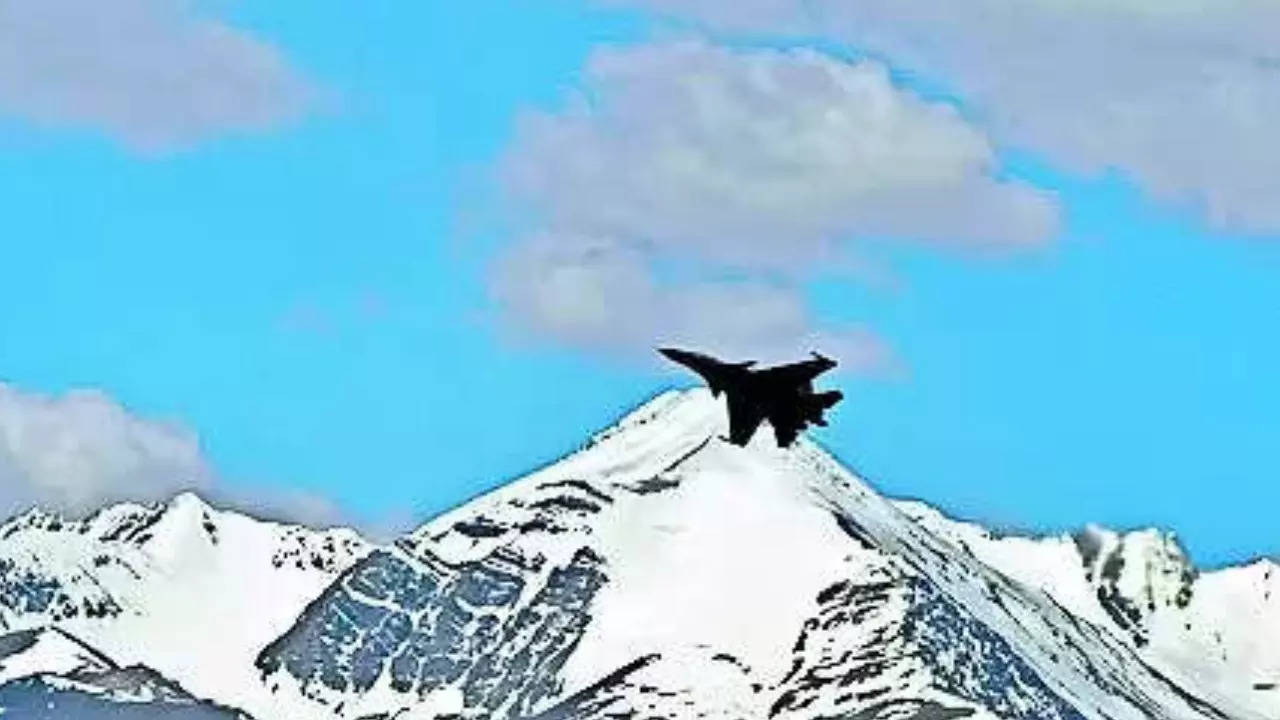NEW DELHI: India plans to stick by the sequential process of first disengagement of the troop face-offs at Depsang and Demchok, followed by de-escalation and de-induction of soldiers along the Line of Actual Control, in the ongoing military confrontation in eastern Ladakh.
This is at least what foreign secretary Vinay Mohan Kwatra conveyed on Thursday when he said PM Narendra Modi and President Xi Jinping “agreed to direct their relevant officials to intensify efforts at expeditious disengagement and de-escalation” towards resolving the over three-year confrontation that has led to a steep nose-dive in bilateral relations.
Troop disengagement at the Charding Ninglung Nallah (CNN) track junction near Demchok, where the Chinese have pitched some tents in what is Indian territory, is relatively easy to resolve.
But the major deadlock is over the Depsang Plains, a table-top plateau located at an altitude of 16,000-feet, where the People’s Liberation Army has been actively blocking Indian patrols around 18-km inside what India considers its own territory. Only after the rival troops disengage at these two face-off sites can the process of de-escalation and de-induction of the over 50,000 soldiers each forward deployed by the two armies along with heavy weapons, take place.
“Real de-escalation, if at all it takes place, will mean the troops return to their peacetime locations. Moreover, the no-patrol buffer zones created after troop disengagements on both banks of Pangong Tso, including the Kailash range, Galwan Valley and Gogra-Hot Springs are also supposed to be just temporary arrangements,” a source said.
The military commanders from the two sides have been holding a flurry of meetings in the run-up to the BRICS summit as well as the G20 leaders’ meet in New Delhi on September 9-10.
“There are already directions from the top to reduce tensions in the military confrontation by strengthening CBMs and evolving fresh rules of engagement that can lead to defusing the troop face-offs,” the source said.
The 19th round of corps commander-level dialogue on August 13-14 has been followed by an unprecedented three days of Major General-level talks to strengthen confidence-building measures between the rival armies at Daulat Beg Oldie and Chushul.
This is at least what foreign secretary Vinay Mohan Kwatra conveyed on Thursday when he said PM Narendra Modi and President Xi Jinping “agreed to direct their relevant officials to intensify efforts at expeditious disengagement and de-escalation” towards resolving the over three-year confrontation that has led to a steep nose-dive in bilateral relations.
Troop disengagement at the Charding Ninglung Nallah (CNN) track junction near Demchok, where the Chinese have pitched some tents in what is Indian territory, is relatively easy to resolve.
But the major deadlock is over the Depsang Plains, a table-top plateau located at an altitude of 16,000-feet, where the People’s Liberation Army has been actively blocking Indian patrols around 18-km inside what India considers its own territory. Only after the rival troops disengage at these two face-off sites can the process of de-escalation and de-induction of the over 50,000 soldiers each forward deployed by the two armies along with heavy weapons, take place.
“Real de-escalation, if at all it takes place, will mean the troops return to their peacetime locations. Moreover, the no-patrol buffer zones created after troop disengagements on both banks of Pangong Tso, including the Kailash range, Galwan Valley and Gogra-Hot Springs are also supposed to be just temporary arrangements,” a source said.
The military commanders from the two sides have been holding a flurry of meetings in the run-up to the BRICS summit as well as the G20 leaders’ meet in New Delhi on September 9-10.
“There are already directions from the top to reduce tensions in the military confrontation by strengthening CBMs and evolving fresh rules of engagement that can lead to defusing the troop face-offs,” the source said.
The 19th round of corps commander-level dialogue on August 13-14 has been followed by an unprecedented three days of Major General-level talks to strengthen confidence-building measures between the rival armies at Daulat Beg Oldie and Chushul.
